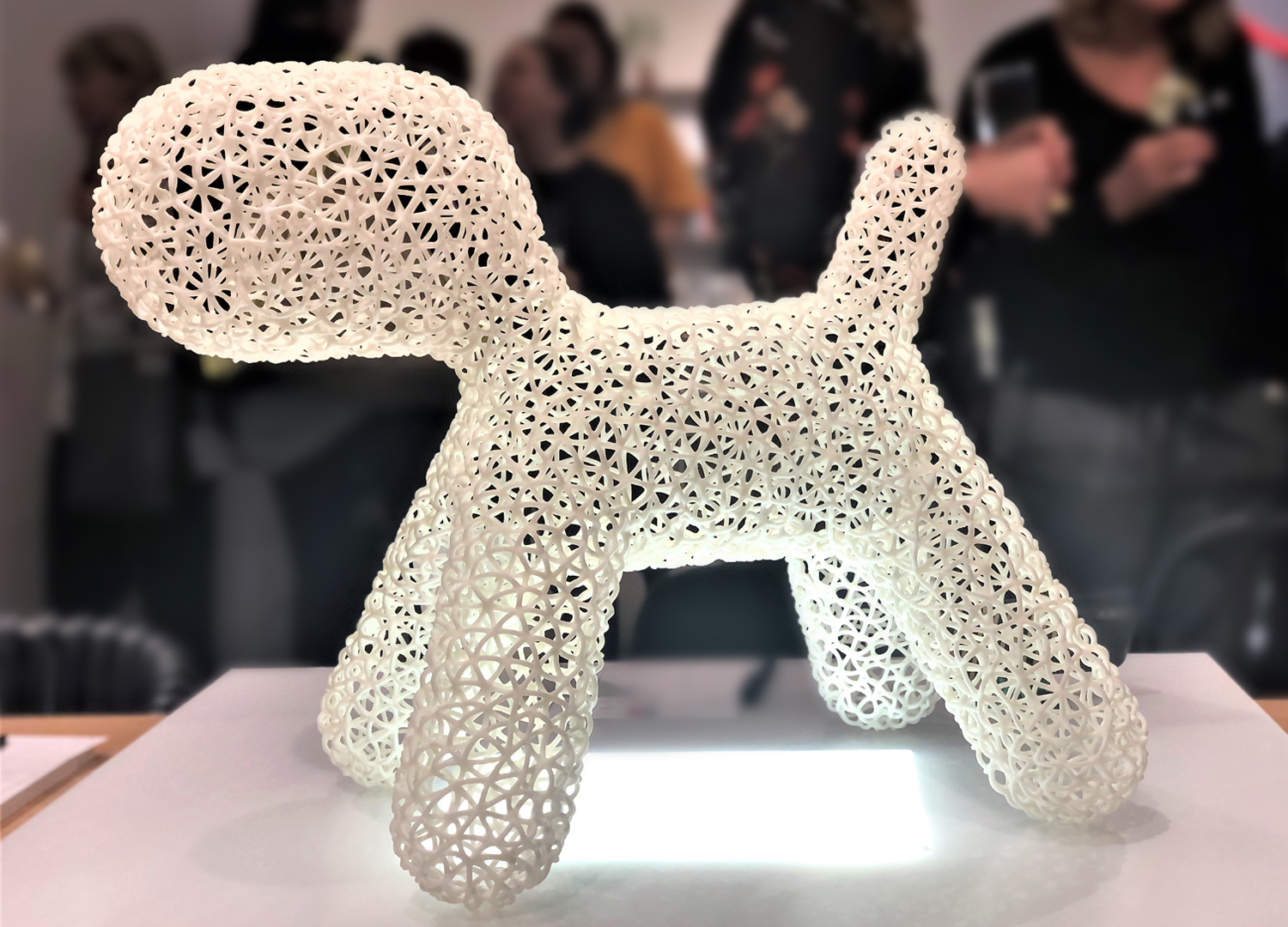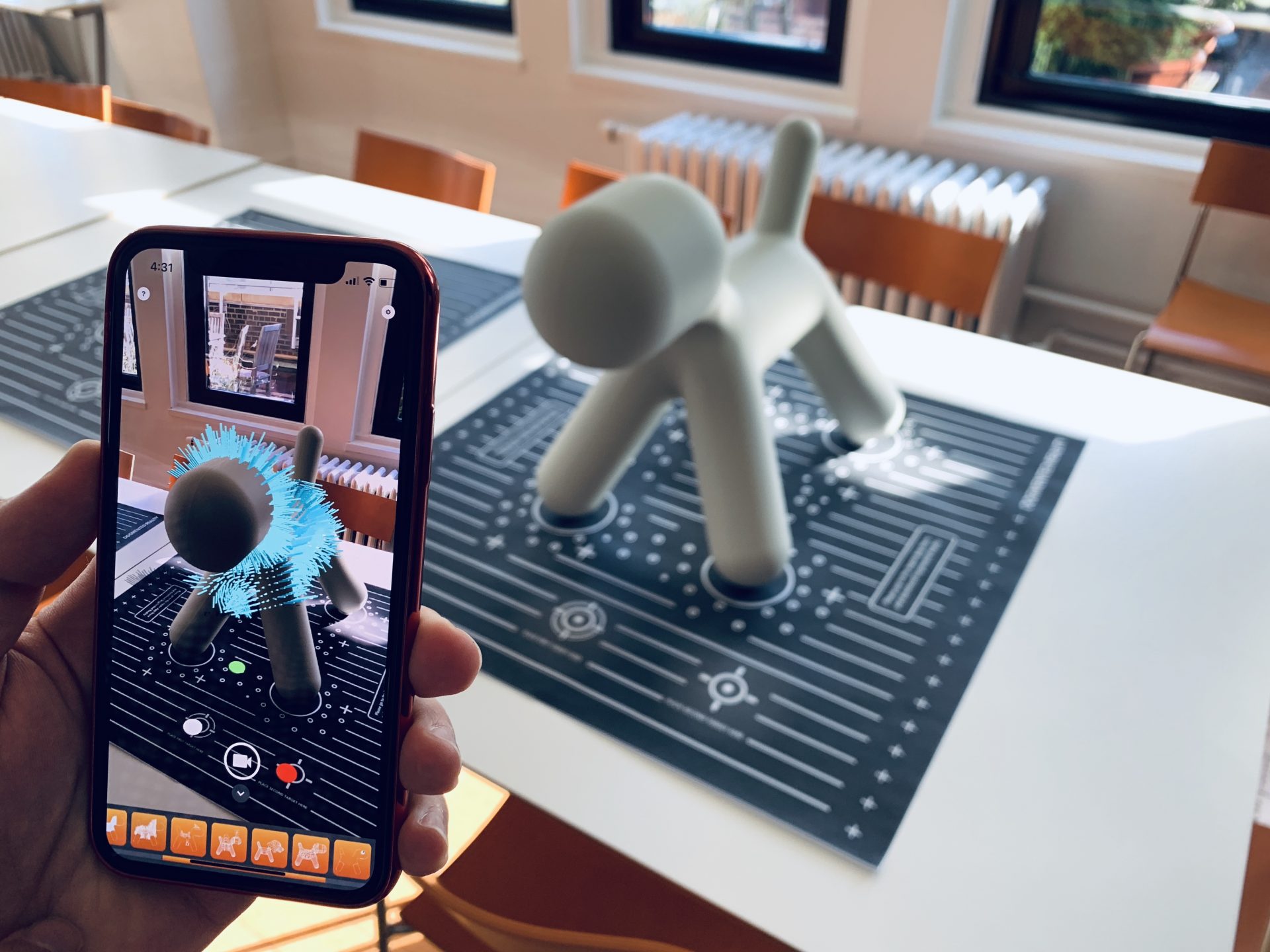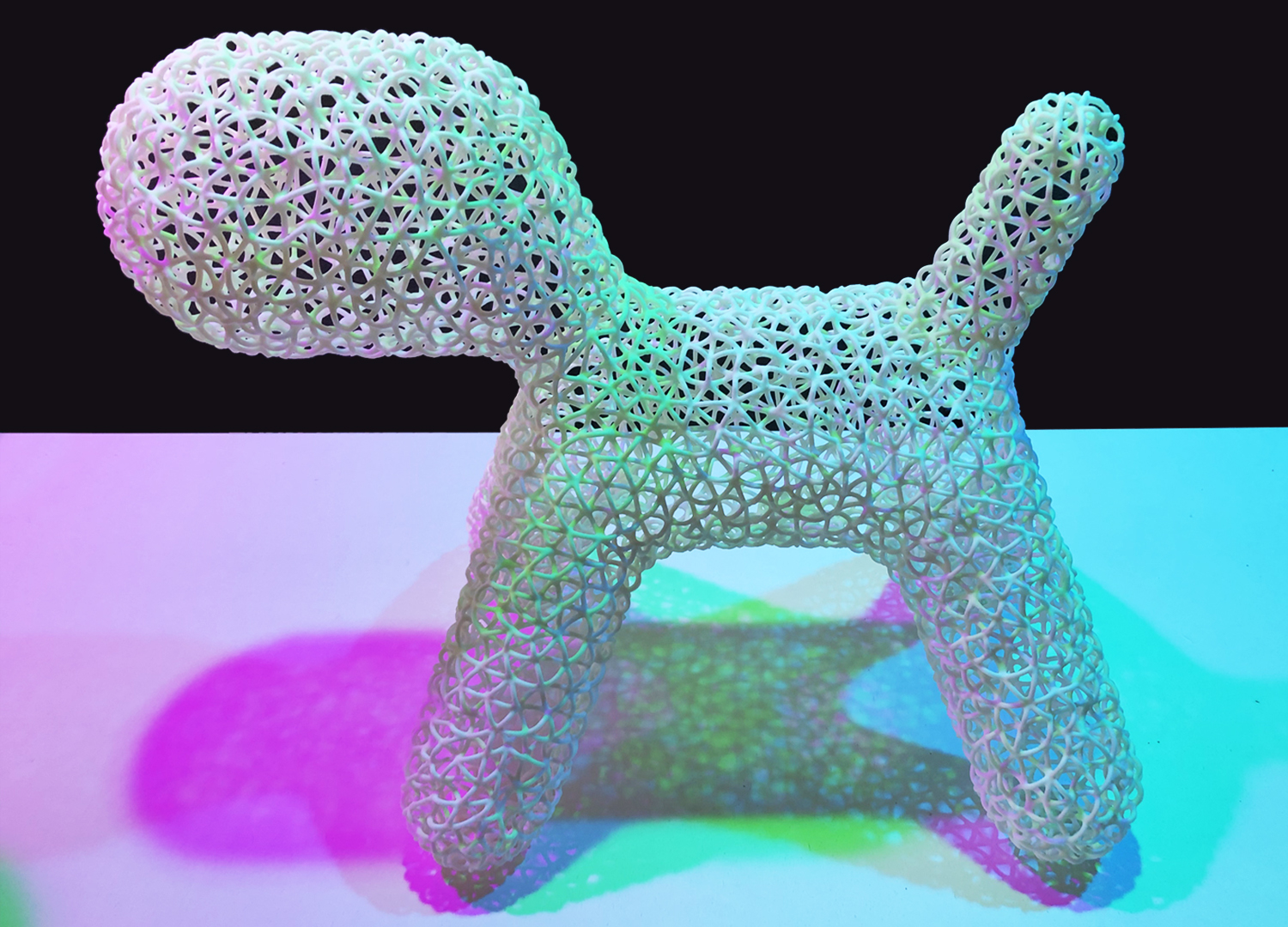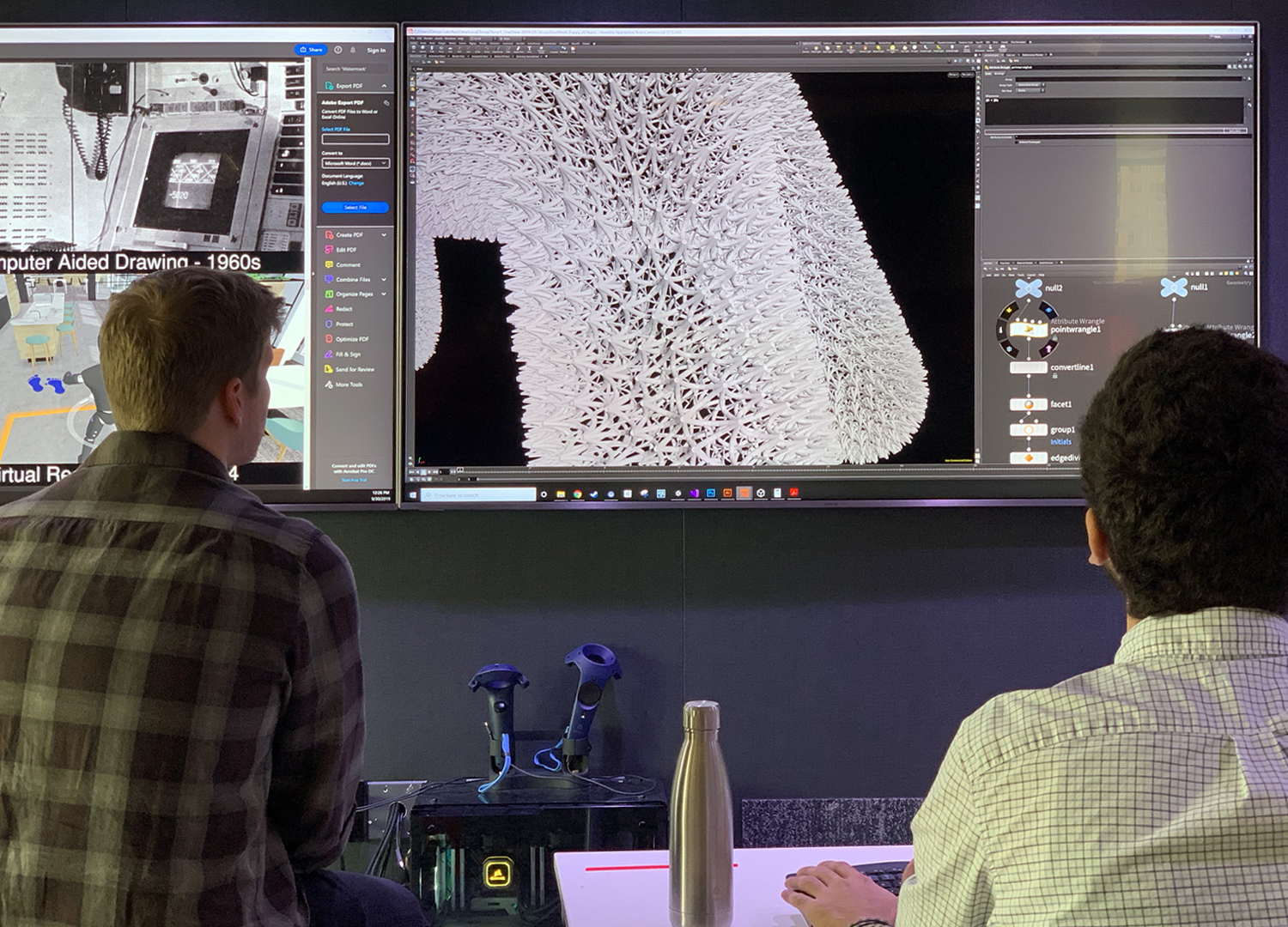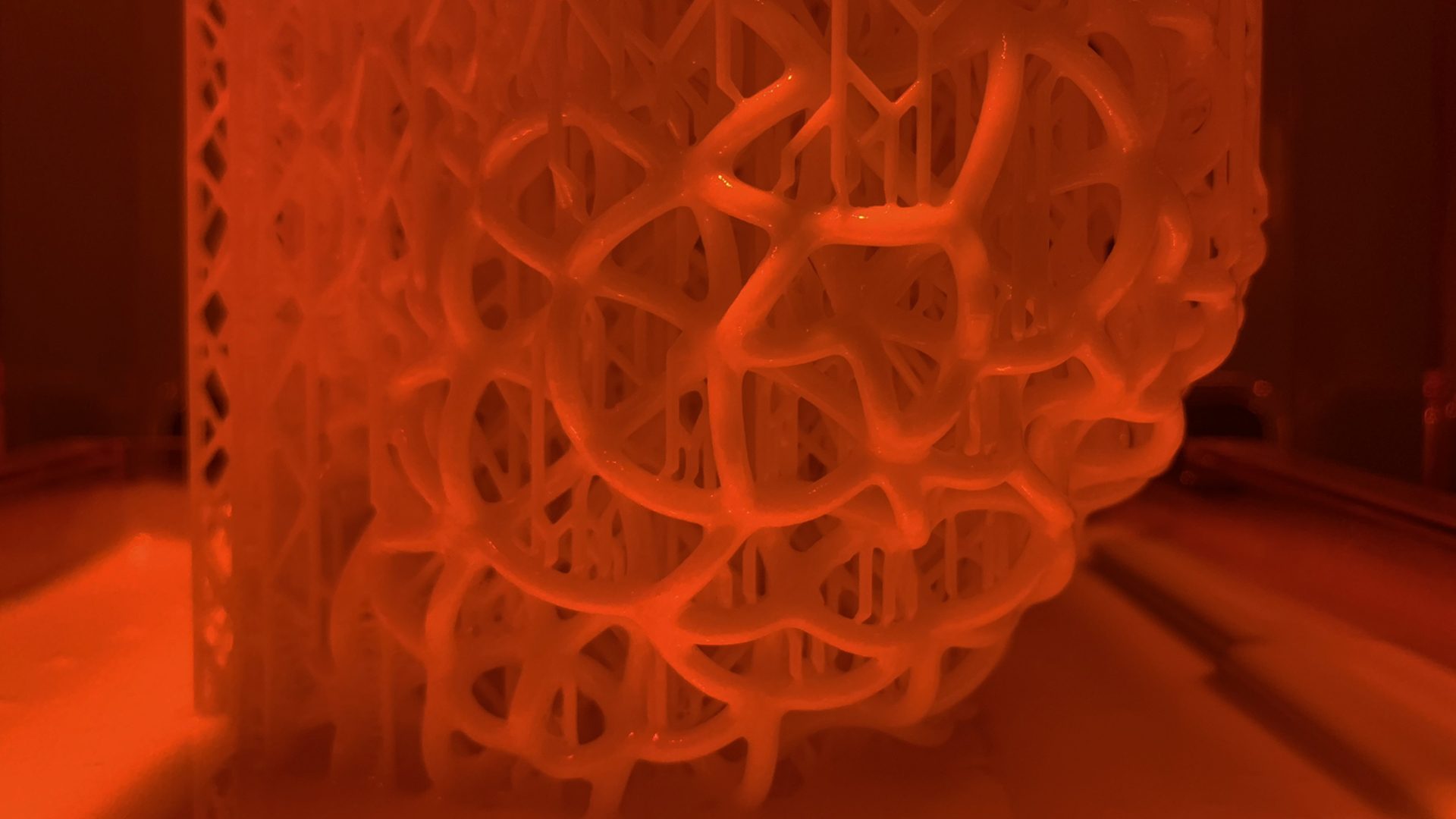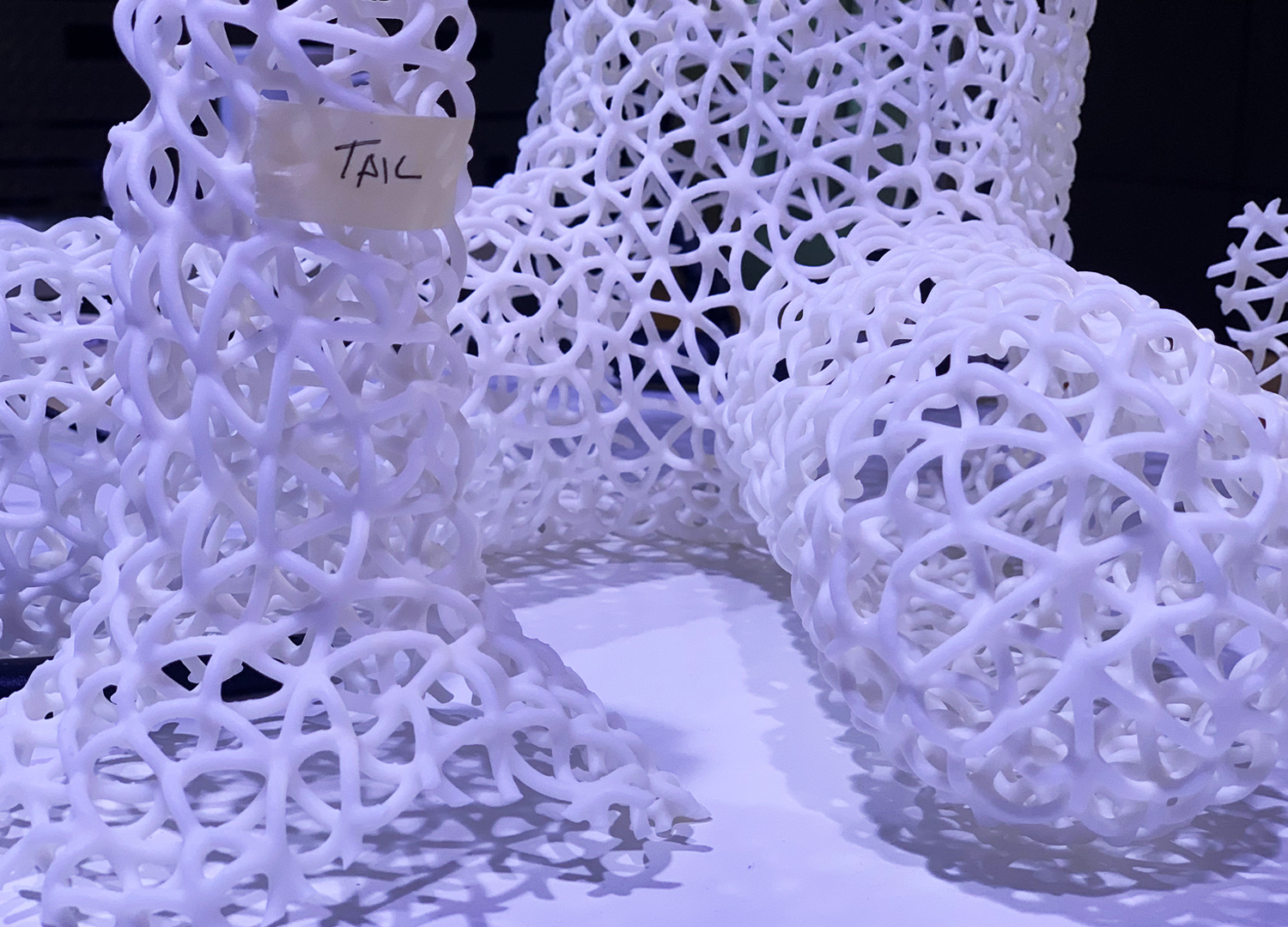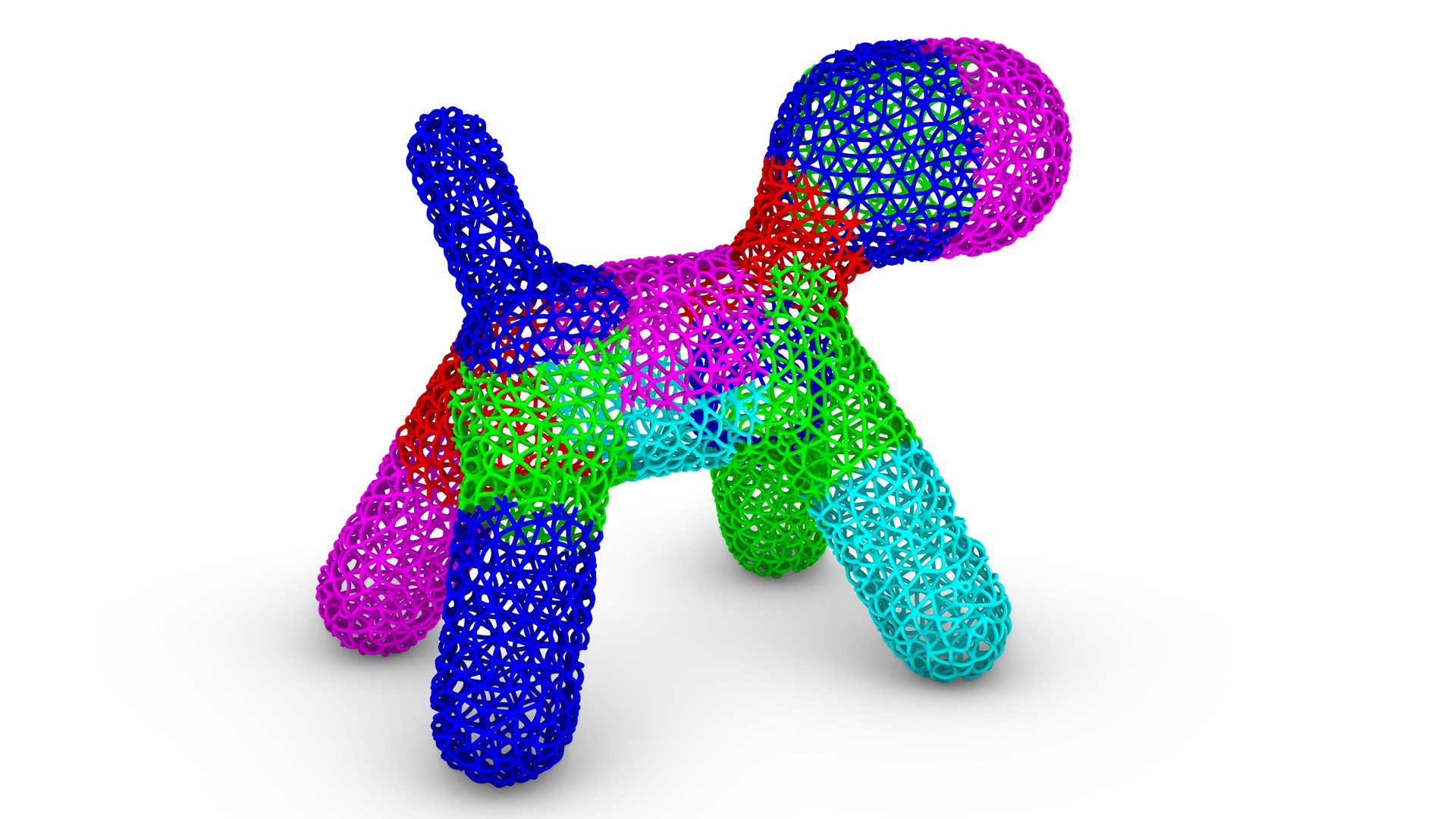The Intro
For years, the Herman Miller Puppy Love Challenge has offered the unique opportunity for designers across the industry to flex their creative muscles and come up with a show-stopping reimagination of the Magis Puppy sculpture. In 2018, we entered the contest with “Dogmented Reality,” our app-based augmented reality puppy that changed its look at the touch of a button, which ultimately won the Top Dog “Most Innovative” prize.
For 2019, we revved up our Design Lab’s Microfactory of 3D printers to complete Micron, our completely original Magis Puppy entry for this year’s Challenge. Our team, Alter Ego, developed Micron’s look through a series of generative design concepts to totally reimagine its bold, yet simplistic, form.

